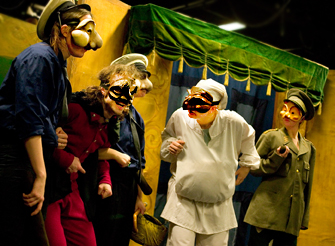It is about annihilation of authorities. It is easy to find its way back to the King of Carnival and the sacrificing of him, the struggle between Lent and the King of Carnival, even the Feast of Fools with its scorning of the power.
The old man is representing the authorities in society, and by that he becomes the enemy. He is representing the part of humanity that is in the way for merriment, celebration, spring, for life itself. In that way he is the fall, the overripe, death. He must be destroyed for the joy and festivities to be resurrected.
When the dethronement happens, the distance, the old man and the authority he represents collapses. It is an amusing experience when he becomes naked. It is not just the, before so perfect sovereignty, but also the empty symbols of power that is destroyed and ridiculed, that we find amusing.
It is not always easy to see the difference between this element and the combat in Commedia dell’Arte (as if it would be interesting at all to see). The combat is about the battle itself, where the young sometimes wins and sometimes not, while this is about the actual winning or the old man losing. We focus on and want to see the old man dragged in the mud. That is one reason why he never really dies (even though he does symbolically), because then we would miss the actual defeat, the dethronement, which is the primary.
Back to Performance structure


Pingback: Commedia dell’Arte – mocking the power | Commedia dell'Arte & Vulgar Comedy